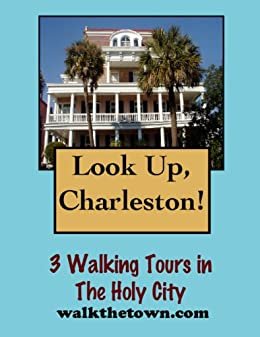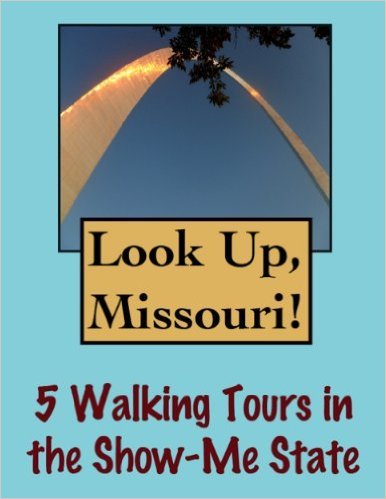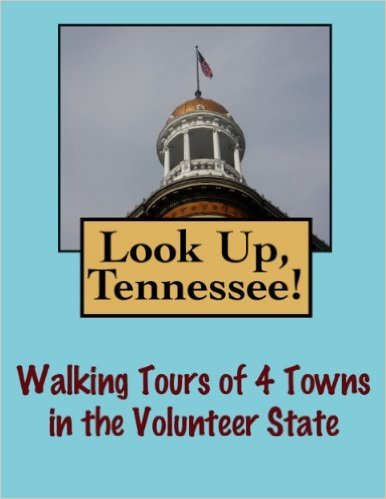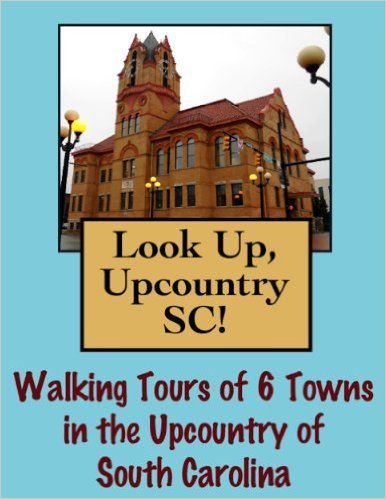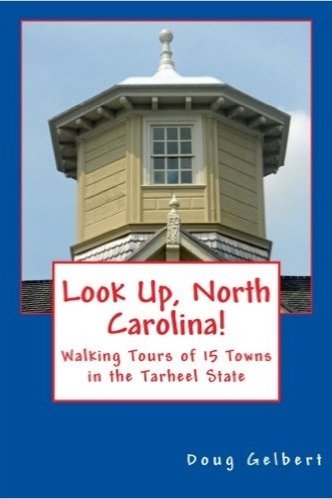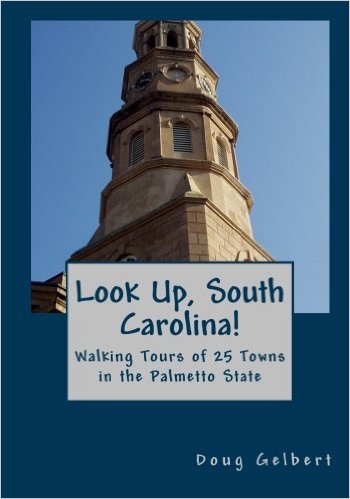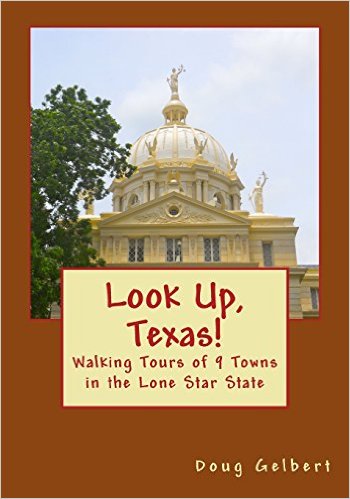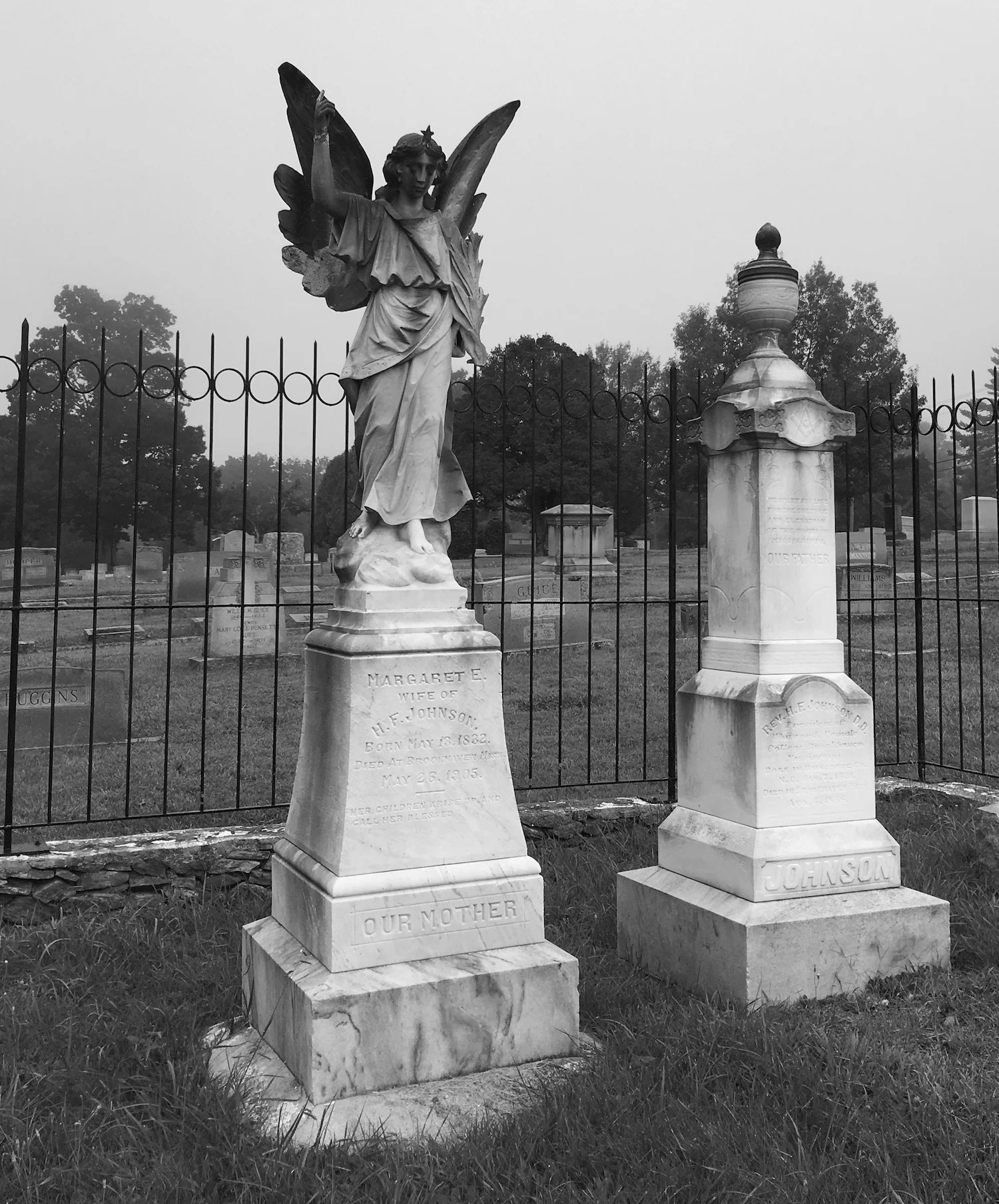Buy on Amazon
Tryon Country Club owes its existence to a chance encounter between strangers in Asheville in the 1880s…
Charles Erskine and Emma Payne married in Racine, Wisconsin in 1873. He was 26, she was 19. Emma was the daughter of Englishman Alfred Payne who supported the family in Chicago painting oil portraits and instructing at the the Art Institute of Chicago. Charles’ father Massena was a Massachusetts carpenter who planned to get rich in the California gold rush but wound up in Racine instead. He went to work for the J.I. Case Threshing Machine Co., eventually rising to the position of superintendent and partner of the world’s largest manufacturer of mechanical threshers. Charles followed him into the business and became treasurer when the partnership was dissolved and Case was incorporated in 1880.
Charles despised Wisconsin winters and when chilly air descended over the Great Lakes he began packing his family on the Atchison, Topeka, and Santa Fe Railway en route to the newly developing resort of Pasadena, California. The Erskines purchased land in the Golden State but Emma never cottoned to the snooty high society that took root in Pasadena. In 1885, Emma talked Charles into forsaking California to see what the western North Carolina mountains had to offer.
Asheville was also emerging as a resort destination at this time, but less as a luxury resort than a place where doctors recommended patients go to inhale the fresh mountain air. Emma Erskine was not much more thrilled to be spending her holidays in the company of struggling consumptives as she was with stuck-up socialites. It was in Asheville that a stranger suggested the McAboy House outside a little village called Tryon.
It is likely that the Erskines had never heard of Tryon. Not many folks had. The town was not incorporated and formal streets laid out until 1885. The railroad had only arrived eight years earlier, and only with the greatest of difficulty. After decades of talk the Asheville & Spartanburg Railroad finally broke ground in Polk County to send trains across the Blue Ridge Mountains. To reach the town of Saluda required a three-mile stretch of track that would become the steepest standard-gauge mainline in the United - by a lot. The Saluda Grade rises 4.7 feet every 100 feet in length. To find tracks as steep you have to go all the way to New Mexico and there the grade is only 3.5 percent.
It would take five years to complete the Saluda Grade and necessitate the use of large scale convict labor in North Carolina for the first time. So many workers were maimed and killed in building the railroad that a special investigation by the state legislature was called. The workers camped down below, in Tryon, where one day golf balls would fly and golfers would try to keep rounds from going off the tracks.
The first train steamed up the mountain on July 4, 1878. The Saluda Grade was the only place in America where trains went faster going uphill than they did going downhill. Sitting at the bottom of the grade Tryon became an ideal place to stop and allow workmen to hose down howling brakes and maybe grab a refreshment. It was here, just north of the village, that Leland Reid McAboy operated his guest house.
A preacher’s son, McAboy became a Presbyterian minister himself in Pittsburgh. McAboy became active in the petroleum business during America’s first great oil boom in western Pennsylvania in the 1860s which enabled him to move his ailing family to the Tryon Valley in 1869. McAboy purchased the homestead of Columbus Mills, who had been a major player in the formation of Polk County in 1855, tacked on a third story, and welcomed guests to his inn until his death in 1885 at the age of 69.
By the time the Erskines arrived at the McAboy House there were six trains stopping daily at the Tryon depot. In addition to the inns in town, along Trade Street were a scattering of houses, a couple of stores and a livery stable. Writers and correspondents were beginning to spread the attractions of the area’s “Thermal Belt” - a meteorological phenomenon that sees mountainside temperatures at Tryon’s 1,200-foot elevation elevation remain warmer than points higher and lower; lower because colder air is trapped in the valley.
Indeed, the lack of vine-killing frosts made the area renowned for growing prized grapes. The story goes that the Southern Railway’s Carolina Special did not stop at little Tryon on its initial runs. The locals began flagging down the train and serving passengers some of its flavorful “Tryon Grape” wine. The fame of “Tryon Grapes” echoed across the nation and Tryon remained a much-anticipated stop for the Carolina Special until its final run in 1968.
Charles and Emma Erskine were indeed enchanted by the Pacolet Valle. Charles was soon scouting locations for a family winter residence. In the end he settled on land not far from the McAboy, closing on his new property on July 12, 1892. More land was purchased and Richard Sharp Smith, an architect from England who was retained to supervise construction of the Biltmore Estate, was consulted on a new house. In the winter of 1897 the Erskines spent their first season in their rustic stone manor house, known as Lynncote.
The Erskines became drivers of their new community, building a schoolhouse and a teacher’s cottage. They financed the Congregational Church, designed by son Hal. Another son, Ralph, was instrumental in bringing electric power to the town. Charles directed the construction of a three-mile road through his property which eventually became Lynn Road, SR 108. Erskine money fueled construction of a new building for the Lanier Library.
Emma Erskine meanwhile was making Lynncote the center of social and artistic life in Tryon. For her part, Emma painted watercolors and wrote books of poetry. She penned a novel, When the Gates Lift Up Their Heads, in 1901 and when her second novel, The Mountain Girl, was published it was serialized in The Ladies Home Journal. It eventually went through 13 printings.
Charles Erskine died in 1908, in his 62nd year. The family home in Racine was sold and Lynncote became the full-time Erskine residence. Emma inherited her husband’s land holdings and she was about to add another title to her bulging civic resume in Tryon - real estate developer.
READ THE BOOK



































































































































